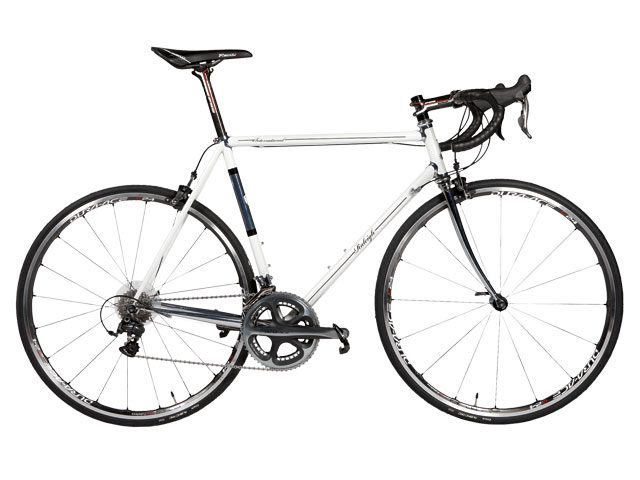Raleigh International road test
A modern take on a classic ride.


Raleight International
$7,000
Components Shimano Dura-Ace 7900
Wheels Shimano Dura-Ace
WH-7900-C24 Clincher
Sizes 50, 53, 55, 57, 59, 62
The Raleigh International is a strange beast. At first glance, it’s a sharp looking bike with a retro style. Look closer. Yes, those are chrome lugs holding butted steel tubes. But that cockpit is anything but retro. The stem, handlebars and seatpost are carbon fibre with modern designs: compact drop bars and a zero-setback seatpost. And those components: all Shimano Dura-Ace. What’s going on here?
“Seven years ago, when we started the development process, a lot of folks were talking about making the International a heritage bike,” says Chris Speyer, executive vice president of product development and marketing of Raleigh America. “But we wanted to blend history along with contemporary technology. Rather than just pay tribute to Raleigh’s past, we thought this was a nice compromise: we could make this a very modern bike using a material that people associate with our history.
” On the test ride, the bike was smooth and comfortable, as you would expect from a quality steel. However, I was also struck by how sleek it felt, which shouldn’t have come as a surprise. It wasn’t that long ago, 20 years or so, that steel was still the material of choice for the pros.
“The bike uses 853 Reynolds tubes on a lugged-frame platform with a traditional racing geometry,” Speyer says. “We use the 853 Reynolds because it’s the material that’s probably most recognized amongst the general cycling community. It’s for someone looking for a bike that’s a little more performance-oriented. Compared to a 531 or chromoly frame, you’re going to be able to get the International in a 57 cm frame weighing roughly at 17.1 lb. for the complete bike. Ultimately, that’s a lightweight bike with a really supple feel underneath you that you can only get out of a steel frame.”
While the test rides definitely confirmed Speyer’s assessment, I might temper it a little, so to speak. A performance-oriented steel bike, even one as zippy at the International, isn’t as sharp as a carbon-fibre or aluminum one. I did feel it sprinting with friends and racing for those yellow lights. The bike also felt a little sluggish on climbs. My Strava segments didn’t suffer, but it didn’t feel as if I was getting the full return for my efforts. To be fair, that could have also been me and the extra kilos I’m carrying as the season winds down. But what the bike lacks slightly in performance, it definitely makes up in ride quality.
The Shimano parts were flawless: the shifting was smooth, the 11-25 10-speed cassette provided an excellent range when paired with the 53- and 39-tooth chainrings. The tubeless carbon clincher wheels give an almosttubular performance without the fuss of the latter. The carbon FSA stem, FSA K-Force handlebar and seatpost work in conjunction with the steel frame for fine handling and ride feel.
The steel connoisseur might have a few quibbles with some elements at the frame’s joints. The paint masking isn’t as crisp as it could be as the coating occasionally crosses over the edges of the odd lug. Also, some lugs have file marks. This connoisseur should keep in mind, though, that the International is a production bike. If such fine details are important, well, it’s time to find a bespoke builder who can work at these features. Of course, that kind of craftsmanship doesn’t come quickly. (Five-year waiting list anyone?) The International is a much more accessible, good-looking bike that will perform exceptionally. It would be at home in gran fondos, which fit with its racing pedigree. It’s also just the thing for spirited group rides and those weekend epics. If anything is slowing this bike down, it’s probably the rider.
